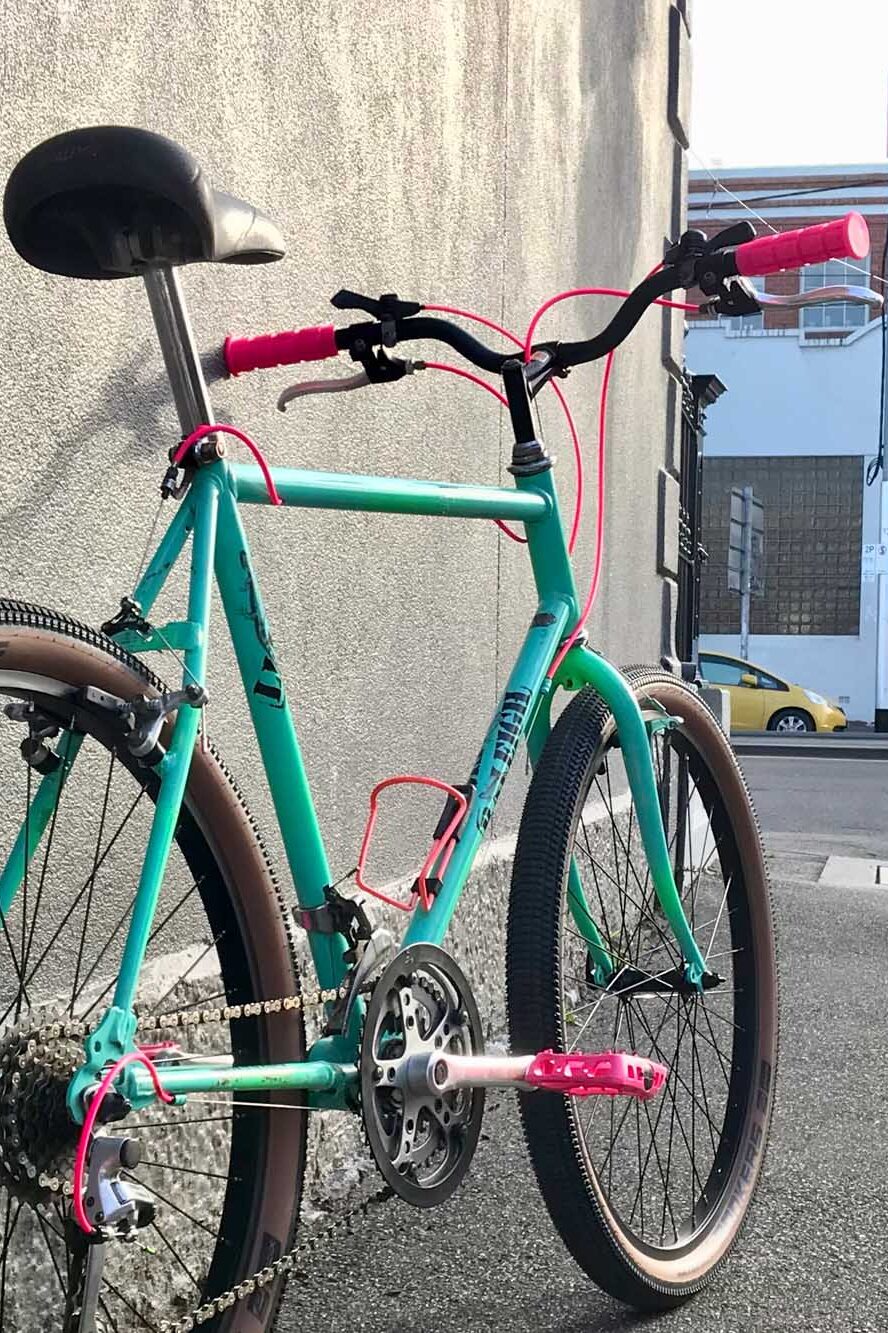Let’s forget about disc brakes and electronics and internally-routed everything for a moment. On the streets and Facebook Marketplace groups of Melbourne, there’s something else happening: 26” mountain bikes are coming back into vogue. The original mountain bike wheel size, cast adrift a decade ago in favour of 29” and 27.5”, is slowly returning to prominence. But this phenomenon isn’t being led by the industry, which is still pursuing speed and performance. Instead, it’s led by a quiet groundswell of appreciation for the versatility and practicality of an old format.
A bit of history
To wind the clock back: from the genesis of mountain biking, the 26” wheel size had a stranglehold on the mountain bike. It was adopted by the early builders of this new genre, especially on the West Coast of the US. For several decades it stayed in vogue, apart from fleeting forays into 650B/27.5” and 29”. But all things have an end, and for 26” mountain bikes – after weathering the introduction of suspension and disc brakes – the final nail in the coffin for the performance market came early last decade. Working in a bike shop around that time, I can point at the moment that Australia’s biggest bike brand Giant abandoned 26” as the beginning of the end: apart from the lowest-end models, anything even vaguely performance-related shifted to 29” or 27.5”. Within a matter of months, performance 26” mountain bikes were a heavily discounted waste of showroom floorspace.
With the tap turned off for quality new 26” bikes, the market moved on. Brands producing wheels and tyres either sold down their inventory or replaced it cautiously. New trends came to the fore and faded: like the urban fixie, which was huge in the late 2000s and early 2010s and has since become extinct in sales catalogues. 26” wheeled bikes moved to the lower end: the bicycle-adjacent objects sold through department stores and toy shops. And while the world moved on, garages around Australia had those quality old MTBs lurking in corners, getting increasingly dusty.
Which brings us to a few years ago – where, in the midst of a pandemic that led to people dusting off old bikes and having more time on their hands to tinker with them, the fortunes of the 26” bike started to reverse.
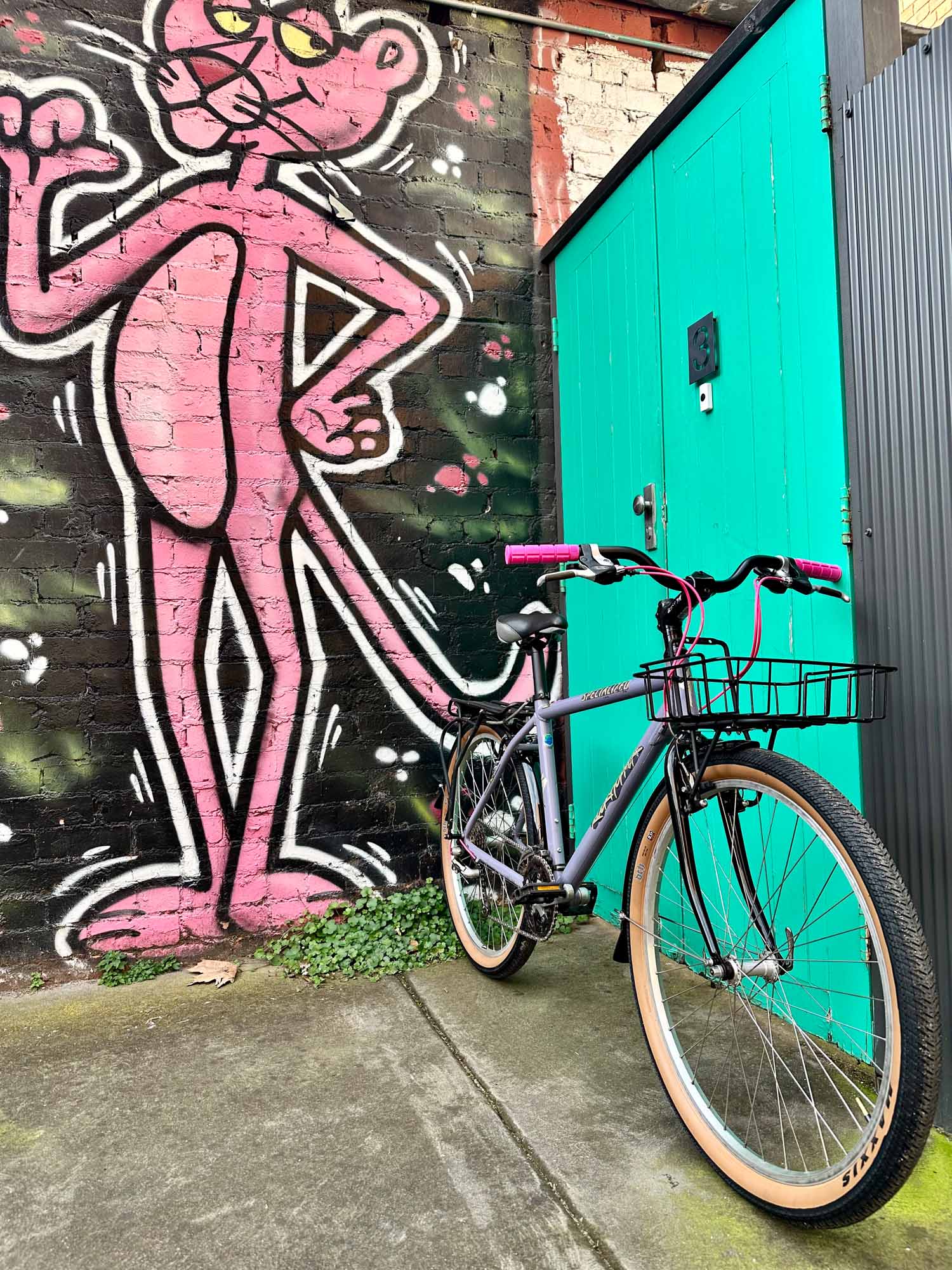
An old new world
Any cultural phenomenon, big or small, is driven by passion – and that passion can come from different motivations. From record players to coffee machines to vintage motorbikes, there are people restoring and optimising their projects, and cycling’s no different. For the 26” ‘community’ – I use that term loosely – things split broadly into the ‘period-correct’ crowd and the ‘restomod’ (restored & modified) crowd, with different demographics and ideologies behind each group. But with their powers combined, both drive new demand for decades-old mountain bikes, creating a thriving second-hand market and supporting entire businesses out of their restorations.
This is bigger than just Melbourne’s cycling sub-culture, of course; there’s been a measurable impact on bicycle culture and manufacturing output elsewhere. Leading shops in the space like Japan’s Blue Lug are talked about in revered tones, and ship goods around the world. The shifting interests of sites like The Radavist and Bikepacking.com and Instagram pages like Stridsland Journal (85k followers) and Schoolyard Projects (home of this excellent cable tie hack) have also helped build the stoke.
On the manufacturing front, this has led to a growth in demand for fresh tyres: Panaracer’s Jeff Zell told Escape Collective that the market for 26” initially “declined drastically, then ebbed higher and maintained for some time, but over the last 3-5 years has been growing again.” As a proportion of the company’s output, he says, 26” represents “about 10%” of Panaracer’s manufacturing volume (combined between Panaracer-branded and products manufactured or licensed to other brands, like René Herse and Sim Works).
These aren’t budget tyres to maintain department store bikes: most of this offering, Zell said, is “centered around the retro market, which is high and growing worldwide, and those riders still maintaining their beloved 26ers and wanting higher end components for it.” Zell said that Panaracer still produces models like the Smoke and Dart, first introduced in the late 1980s, along with more recent models including the Gravel King. “We plan to offer new 26” tyres going forward, too,” he said. (Maxxis and Schwalbe are also prominent in the category; neither responded to a request for comment.)
The two schools of 26”
Panaracer’s split offering – between more modern tyres and period-correct models – is a neat encapsulation of the two competing schools of thought in the 26” community. It also keeps the purists happy: those who have an interest in bringing old mountain bikes back to original catalogue form. This phenomenon, at least in Australia, seems to be largely focused on the pre-2000 era; where cantilever brakes were king, suspension was emerging but not widespread, stems were long and handlebars were narrow. In Facebook groups like Retro MTB Australia (pre 2000), which has 7,400 members, users share their restorations and ask for leads on old and obscure parts; there’s also a thriving buy/swap market. The 26” platform is the common ground, but the desired outcomes of those builds are quite different.
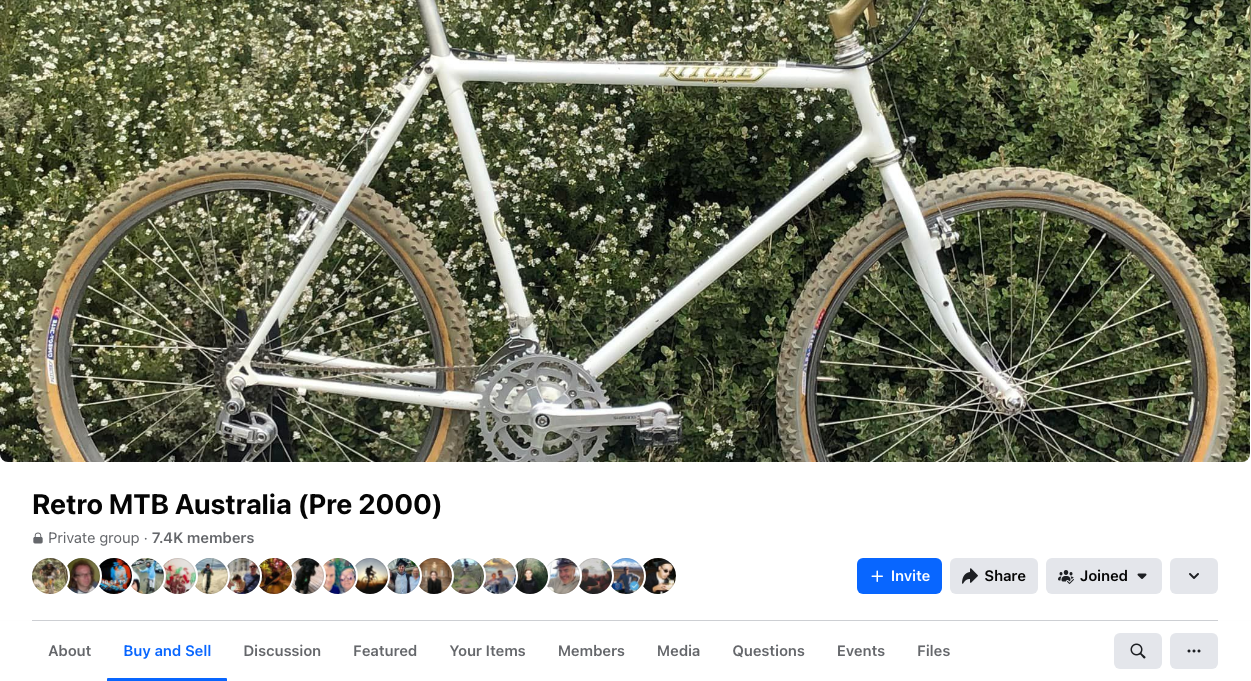
On one hand is the purist: “I try to restore them to as they were when they left the factory all those years ago. That’s where the value is,” Jon, one of the more active members in the Retro MTB Australia group, told Escape Collective. “Same as if I were restoring a car, a motorcycle, or a piece of furniture – originality wins. Part of the riding experience is experiencing those old riding traits – narrow bars, skinny tyres, old frame geometry, 21 gears.” There’s parallels to be found in other categories, he explained: “If I were driving an E-Type Jag I’d want it to drive as it did in the 60s.” True to that ideology, he regularly turns out period-correct builds from brands like Kona, Marin, and Cannondale. As the owner of a lovingly-restored 1994 Cannondale Beast of the East I bought from Jon – complete with NOS Ritchey tyres and glistening Shimano LX brake levers – I can attest to the je ne sais quoi of an old bike (and the sometimes kooky ride character).
Those on the hunt for the right 26” bike – whether they’re a faithful restorer or a moderniser – keep a close eye on Gumtree, Facebook Marketplace and hard rubbish piles. Sometimes a former-owner knows exactly the value of what they have and asks for it; sometimes you can come across barely-used pieces of history for bargain prices. Certain bikes and framesets are hot commodities – Specialized Rockhoppers and GT triple-triangle designs in particular – and from there, they begin their journey to bike shops and the streets.
From the shop to the streets
The inner suburbs of Melbourne, once the domain of the fixie, is one such hotbed, with a cavalcade of old mountain bikes cruising along the streets of Brunswick and Fitzroy. This is less the domain of the purist: often there are front baskets and racks, and often the bikes are piloted by riders of about the same vintage. Each bike seems like a marker of a rider’s individuality, from coloured grips to coloured cable outers to stickers everywhere – a modern interpretation of the rigid mountain bikes that were in vogue in the early 90s.
Informally, these are sometimes referred to as ‘basket bikes’ or ‘clunkers’, and on the city streets there’s some logic to their revival. They’re not the fastest thing, but the new demographic of 26″ mountain bike owners aren’t chasing performance. With their sturdy steel frames, they can take a knock. With their mounting points for mudguards and racks, they’re practical. With their wide tyres, they’re comfortably plush and – crucial point! – don’t slide into tram tracks. They’re low maintenance, they’re accessible, and they don’t cost much (most of the time).

Old school
There’s a growing ecosystem of stores that are invested in supporting those customers through that journey, working with them to build unique bikes that scratch an itch. White’s Bikes in Fitzroy North was established nine years ago by Steve White, a 35-year industry veteran and self-described ‘retrogrouch’. Alongside the modern stock that makes up the majority of his trade, White has also made 26” restorations one of his specialties. Of those, there’s about a “50/50 split”, he says, between “the diehard restoration guys that want it as close to original as possible” and the “growing trend of people getting 26 inch bikes and turning them into urban commuters – putting a front rack on it, but still keeping the old aesthetic of the 90s going”.
There’s a clear divide in the type of customer, too, White says: the period-correct client is typically older, motivated by nostalgia or a desire to finally own something that they longed after in the past. “If you were a 15-year-old kid in the ‘90s and you couldn’t afford the blingy anodised bits … now that you’re a grown person with a proper wage, you can afford to throw money at it,” White says.
The very specific requests for that kind of project can send him scouring Facebook groups and eBay worldwide, with new goldmines opening up periodically. One example of a butterfly flapping its wings on the other side of the world was a new market of NOS (new old stock) gear in Greece after the economic downturn: “all of a sudden you could buy brand new Shimano XTR stuff that had never been ridden, never been put on a bike at reasonable prices on eBay,” White says with a chuckle. Sometimes you just get lucky, too: “I did a 1985-86 Fat Chance restoration, and it originally had a rhino-skin covered seat. I couldn’t find one anywhere, but then I found one a guy was selling in Slovakia – it cost a pretty penny, about €300 or something like that, but it was the same seat that was on the bike when it was new, so we bought it. After the restoration was done, the Fat Chance looked like it was rolling out of here on the first day it was built,” White says.
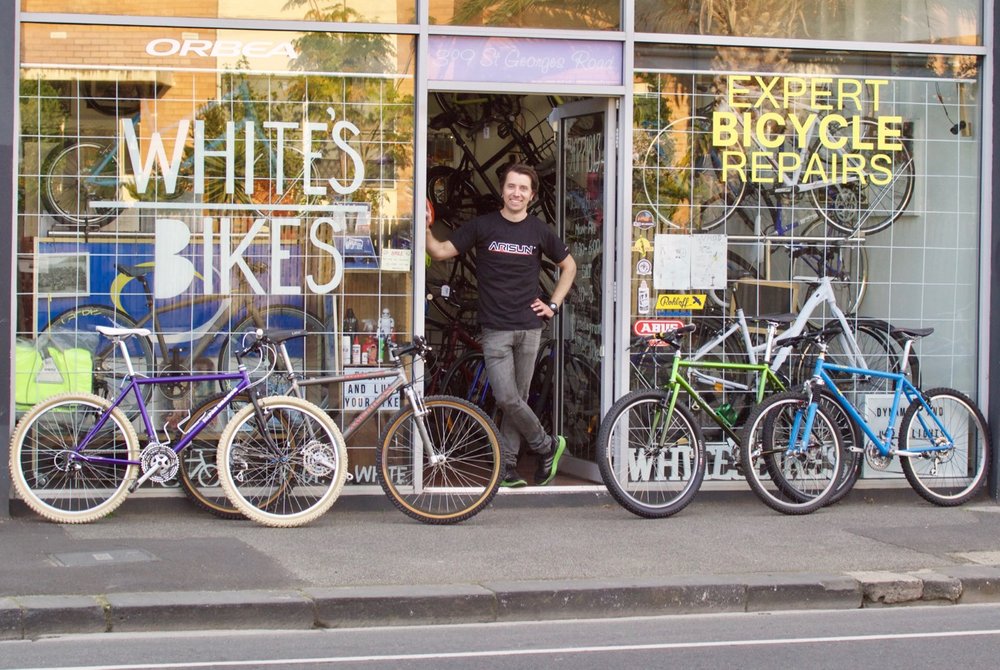
Granted, as a segment of the total cycling industry this kind of transaction is all fairly niche – the bread and butter for White’s Bikes is the sale of everything from modern bikes to handlebar tape, lights to helmets – but, at least for this one small store, the 26” market is still a big enough slice that, Steve White says, “I can order boxes of 400 tyres from Japan that nobody else has stock of” – stuff like the tanwall Smokes and Darts that Panaracer’s Jeff Zell had told me about.
New school
One suburb closer to the CBD on Fitzroy’s Brunswick Street, The Rocket Surgeon is an example of a store that has made a more modern 26″ interpretation its calling card. “For us, it’s neo-retro,” Rocket Surgeon’s Brodie Keyworth told Escape Collective. “We want to keep the aesthetic – high quality steel frames with a shitload of ability to put fenders, front racks, all the other things to make it a bikepacking rig or a cargo rig. But we like modern parts – there’s a reason that bikes are now 11 and 12 speed, not three by seven … and those parts are readily available, and you can compete on price with them.”

As we talk, Keyworth and John Lawrence – the two co-owners of the store – point out a green Shogun leaning against a workbench. Compared to a period-correct build, it’s got 1x gearing made by Microshift, plump tanwalled tyres from Maxxis, V-brakes, and a Crust BMX-style riser bar. It was, Keyworth explains, originally brought in by a customer who had bought the frameset, made by the classic early Australian MTB brand, on Facebook Marketplace. “This build was literally from the frame and fork up, and will probably end up running to around $1,500.” I raise my eyebrows. “Sounds like a lot. But the reality is, when you itemise every single different part on a bike, it adds up quite quickly,” Keyworth says. “And he had full control – we discussed cable outer colour, tyre options; it’s brand new wheels, so all the different wheel options. Literally on everything he had a say.” A typical such build, Lawrence suggests, is in the $1,000-$2,000 pocket, which corresponds roughly with a figure offered by Steve White: “You might buy a cheap second-hand mountain bike for $150 and spend a thousand bucks doing it up and making it your own.”
At that price, a 26” bike built up from decades-old frameset might seem a bit of an oddity – after all, you can get a mainstream hybrid or commuter for that – but, as White alludes to, there are less tangible motivations at play. For one: there’s far more personality to a bike like this. “We see it as a bicycle being an extension of yourself,” Keyworth says. Lawrence nods in agreement. “You can put a lot of personality into a bike – not everyone wants just black on black.”
For many customers, there’s also a sustainability angle to it: an old MTB may have gone out of vogue technologically, but there’s still life in it, and it’s a shame to cast aside something that’s still perfectly functional. “With fast fashion and everything, there’s so much waste … the sustainability aspect is massive. And, besides – I personally think that a bike from a bike shop in 1992 is still probably 10 times better than a bike from Kmart today,” Keyworth says. Having spent a few months scouring the internet for a bike of that vintage and finally gotten my hands on one, I find that pretty hard to disagree with. I also find myself relating to something more universal after my journey down the 26” rabbit hole: the new value that can be found in old things.
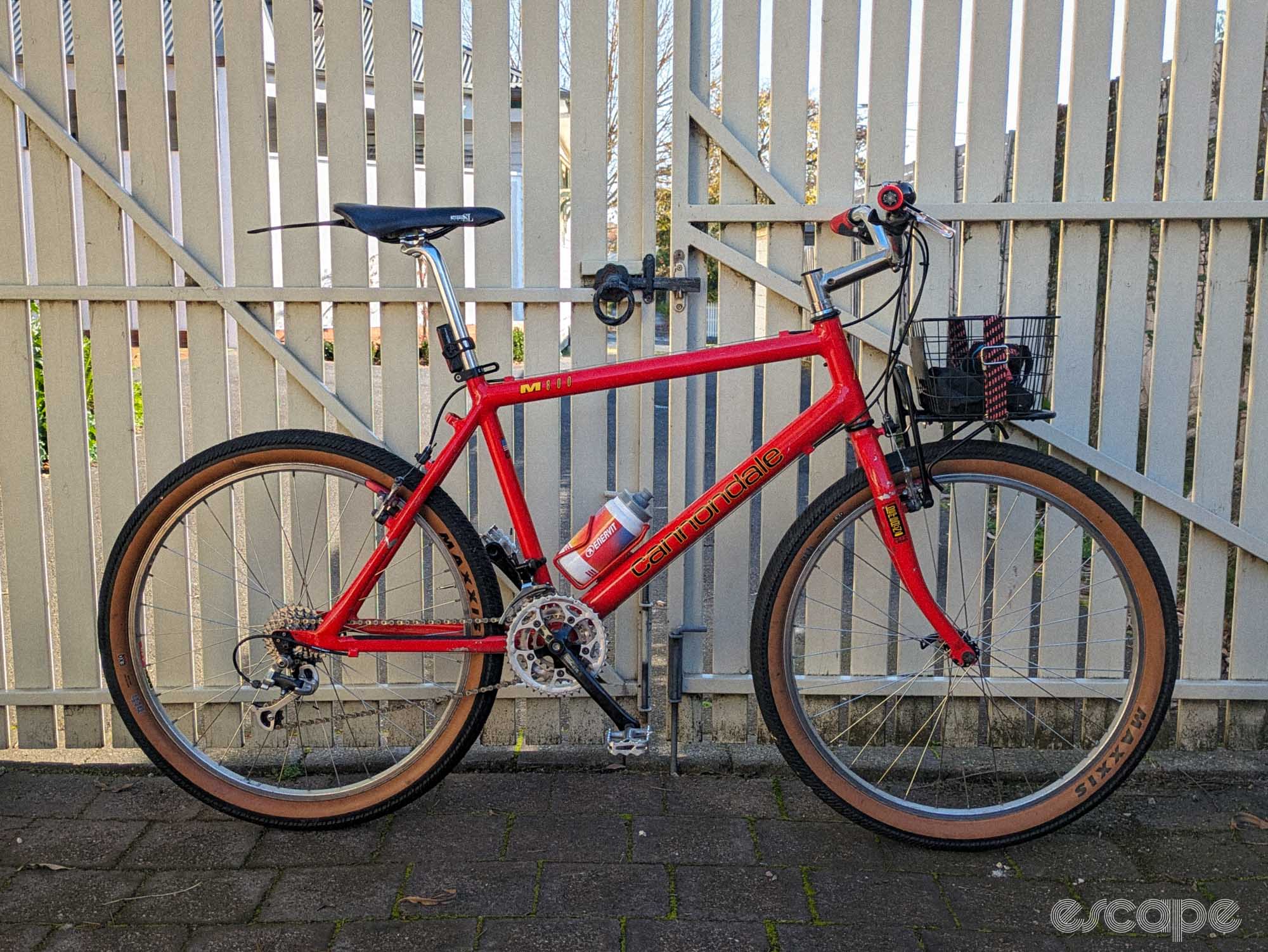
Life rolls on
As I unlock my bike from out the front of the store (this one didn’t get stolen!) and prepare to start making my way home, a young guy on a similar-vintage Cannondale glides the other way. We give each other a knowing look, a smile, a thumbs up.
As there often is when you see someone on an interesting bike, there’s a mutual appreciation of the form built on the foundation of a shared love of bikes. In the 26” revival there are, doubtless, some bigger sociological trends at play – the youthful pursuit of something seen as ‘cool’, and on the other hand the wistful pursuit of fading youth – but at the core of it all, maybe that’s overthinking it. Bikes are great – old bikes and new bikes and especially interesting bikes. What this small-wheeled phenomenon shows is that every bike can have its day in the sun, and be cause for celebration.
Did we do a good job with this story?

